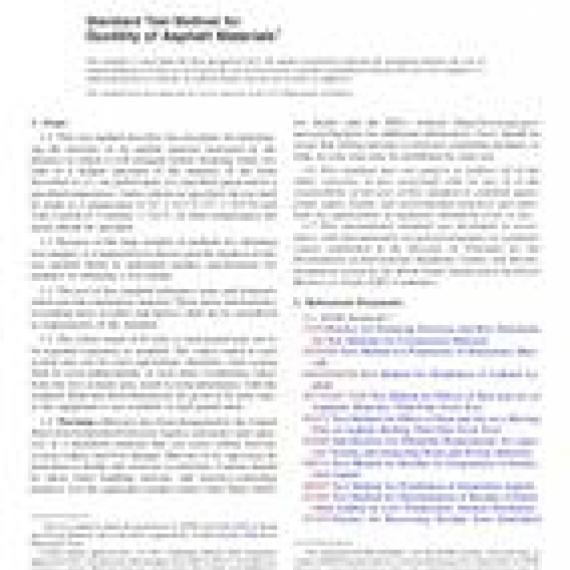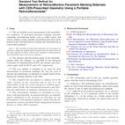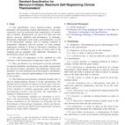No products
ASTM D113-17
ASTM D113-17 Standard Test Method for Ductility of Asphalt Materials
standard by ASTM International, 12/15/2017
Full Description
1.1This test method describes the procedure for determining the ductility of an asphalt material measured by the distance to which it will elongate before breaking when two ends of a briquet specimen of the material, of the form described in 4.1, are pulled apart at a specified speed and at a specified temperature. Unless otherwise specified, the test shall be made at a temperature of 25 0.5C [77 0.9F] and with a speed of 5 cm/min 5.0%. At other temperatures the speed should be specified.
1.2Because of the large number of methods for obtaining test samples, it is impractical to discuss specific products in this test method. Refer to individual product specifications for guidance in obtaining a test sample.
1.3The text of this standard references notes and footnotes which provide explanatory material. These notes and footnotes (excluding those in tables and figures) shall not be considered as requirements of the standard.
1.4The values stated in SI units or inch-pound units are to be regarded separately as standard. The values stated in each system may not be exact equivalents; therefore, each system shall be used independently of each other. Combining values from the two systems may result in nonconformance with the standard. Bath and mold dimensions are given in SI units only, as the equipment is not available in inch-pound units.
1.5Warning-Mercury has been designated by the United States Environmental Protection Agency and many state agencies as a hazardous material that can cause central nervous system, kidney, and liver damage. Mercury or its vapor may be hazardous to health and corrosive to materials. Caution should be taken when handling mercury and mercury-containing products. See the applicable product Safety Data Sheet (SDS) for details and the EPAs website (http://www.epa.gov/mercury/faq.htm) for additional information. Users should be aware that selling mercury or mercury-containing products, or both, in your state may be prohibited by state law.
1.6This standard does not purport to address all of the safety concerns, if any, associated with its use. It is the responsibility of the user of this standard to establish appropriate safety, health, and environmental practices and determine the applicability of regulatory limitations prior to use.
1.7This international standard was developed in accordance with internationally recognized principles on standardization established in the Decision on Principles for the Development of International Standards, Guides and Recommendations issued by the World Trade Organization Technical Barriers to Trade (TBT) Committee.


































